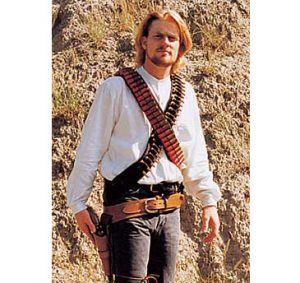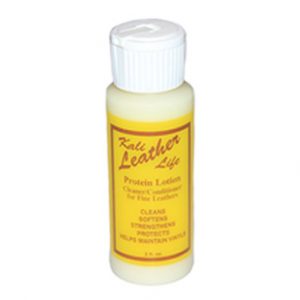What is a Bandolier? A History and Guide to Bandoliers.
The cartridge bandolier stands as one of the most iconic pieces of military and civilian equipment in firearms history. From the dusty battlefields of the 19th century to today’s hunting grounds and shooting ranges, these leather ammunition carriers have evolved while maintaining their essential purpose: providing quick, reliable access to cartridges when it matters most. At Kirkpatrick Leather Company, our Model 1910 Bandolier represents the culmination of over a century of design refinement and traditional American craftsmanship.
Early Military Development (1850s-1880s)
The cartridge bandolier emerged during the mid-19th century as military forces worldwide transitioned from muzzle-loading firearms to breech-loading rifles with self-contained cartridges. The term “bandolier” derives from the French “bandoulière,” originally referring to the broad belt worn by soldiers to carry their sword or musket.
The first practical cartridge bandoliers appeared during the American Civil War (1861-1865), though they were crude affairs compared to later designs. These early versions were often simple leather strips with loops sewn on, designed to carry paper cartridges for rifles like the Spencer repeating rifle. The immediate practical advantages were obvious to soldiers who had previously carried loose cartridges in pockets or pouches, where they could become damaged, lost, or difficult to access quickly during combat.
The Golden Age: 1880s-1920s
The period from 1880 to 1920 marked the golden age of bandolier development. Military conflicts including the Spanish-American War, the Boer Wars, and World War I drove rapid innovation in ammunition carrying systems. During this era, military quartermasters and field commanders recognized that efficient ammunition management could mean the difference between victory and defeat in prolonged engagements.
Standardized loop sizing for specific cartridge types became essential as armies adopted uniform ammunition across their forces. Weather-resistant leather treatments were developed to protect ammunition from moisture, which could cause misfires or cartridge deterioration. Ergonomic design improvements addressed the reality that soldiers needed to carry these systems for hours or days at a time without compromising their mobility or comfort. The integration with military webbing systems allowed bandoliers to work seamlessly with other essential gear.
The U.S. Military adopted various bandolier designs during this period, with the Model 1903 and Model 1910 patterns becoming particularly influential. These designs emphasized durability, weather resistance, and the ability to carry substantial ammunition loads during extended campaigns. Field testing in actual combat conditions refined these designs, leading to improvements that would influence civilian sporting equipment for decades to come.
Transition to Civilian Markets (1900s-1930s)
As military surplus became available after major conflicts, civilian shooters and hunters began adopting bandoliers for sporting purposes. The practicality of having ammunition readily accessible made bandoliers popular among big game hunters on extended expeditions, where carrying capacity and quick access to fresh cartridges could determine hunting success. Competitive shooters requiring quick reloads found that bandoliers offered advantages over other ammunition carrying methods, particularly in matches that emphasized speed and accuracy under time pressure.
Ranch hands and farmers dealing with predators discovered that bandoliers provided a practical solution for carrying the ammunition needed to protect livestock, while law enforcement officers in frontier territories appreciated having immediate access to additional cartridges when facing uncertain situations. The transition from military to civilian use often involved modifications to accommodate different cartridge types and usage patterns, leading to specialized designs for specific applications.
The Kirkpatrick Model 1910 Bandolier: Tradition Meets Excellence
Our Model 1910 Bandolier draws directly from the military patterns developed during the early 20th century. This design represents the pinnacle of pre-World War I ammunition carrying technology, refined through actual combat experience and field testing.
Key historical features include:
- Period-correct loop spacing based on original military specifications
- Traditional construction methods using hand-molding and double-stitching
- Authentic hardware reflecting early 20th-century military standards
- Proper weight distribution for extended wear comfort
-
Bandolier – Model 1910
$230.00 Select options This product has multiple variants. The options may be chosen on the product page
Every Model 1910 Bandolier from Kirkpatrick Leather Company reflects our 70+ years of leatherworking expertise:
Materials:
- 9.5oz vegetable-tanned American leather for maximum durability
- Hand-selected hides ensuring consistent quality
- Traditional tanning processes for authentic appearance and longevity
Construction:
- Hand-molded loops for precise cartridge fit
- Double-stitched seams using heavy-duty thread
- Hand-burnished edges for professional finish
- Hand-dyed leather for rich, even coloration
Care and Maintenance of Leather Bandoliers
Proper Storage
Maintaining your Model 1910 Bandolier ensures decades of reliable service, beginning with proper storage practices that protect the leather from environmental damage. Store in dry conditions to prevent mold and mildew, which can permanently damage leather fibers and create health hazards. Avoid extreme temperatures that can crack leather, particularly the rapid temperature changes that cause expansion and contraction cycles leading to stress fractures. Keep away from direct sunlight to prevent fading and UV damage that weakens leather over time.
Regular Maintenance
Clean with saddle soap to remove dirt and oils that accumulate during use, paying particular attention to areas where the bandolier contacts clothing or skin. Condition with quality leather conditioner every 6-12 months to replace natural oils and maintain flexibility, choosing products specifically formulated for vegetable-tanned leather (I recommend our Kali Leather Life Protein Lotion!). Inspect stitching regularly for signs of wear, addressing any loose threads before they become major problems.
Field Care
When using your bandolier in hunting or shooting situations, wipe down after exposure to moisture or extreme conditions, removing any accumulated dirt, debris, or moisture before it can penetrate the leather. Allow to air dry completely before storage, avoiding artificial heat sources that might cause rapid drying and cracking. Remove cartridges if storing for extended periods, as the weight and pressure of loaded cartridges over time can gradually stretch loops and affect retention-this will also help prevent patina forming on your cartridges.
The cartridge bandolier’s evolution from military necessity to sporting accessory reflects the enduring value of practical, well-crafted equipment that serves real needs across changing circumstances and applications. Our Model 1910 Bandolier represents not just a piece of equipment, but a connection to the rich history of American firearms and the craftsmen who supported them through periods of conflict and peace.
When you choose a Kirkpatrick Model 1910 Bandolier, you’re investing in over 70 years of leatherworking expertise that has been refined through continuous production and customer feedback. You’re supporting traditional American craftsmanship using time-tested methods that create products built to last generations rather than seasons. You’re receiving premium materials sourced and processed in America, supporting domestic industries and ensuring consistent quality standards.
Our lifetime warranty backs our commitment to quality, providing confidence that your investment will provide reliable service for decades of use. Custom options to meet your specific needs ensure that you receive exactly the functionality you require, whether for hunting, competitive shooting, collecting, or historical recreation.
Whether you’re a serious hunter requiring reliable ammunition access in challenging conditions, a competitive shooter demanding quick reloads under pressure, or a collector appreciating authentic craftsmanship that represents the best of American manufacturing traditions, the Model 1910 Bandolier delivers the performance and durability that only comes from traditional American manufacturing!


